Infrared Thermal Imaging is Revolutionary Technology
)
Authored by Craig Smith of Reliability Maintenance Solutions Ltd
Original Article Source, click here.
Infrared Thermal Imaging is useful across many industrial sectors
Hi! I'm Craig Smith, a Reliability Engineer at RMS. Over the past few years I've been using Infrared Thermal Imaging technology to great affect, helping customers diagnose and repair maintenance issues with higher degrees of accuracy and speed.
This article is based on a planned electrical maintenance survey of panels and distribution boards looking for any irregularities. This consists of cables, cable connections, breakers, inverters and control boards.
Traditional methods of detection
The traditional method for identifying an electrical connection or component problem is the use of an infrared camera when it is under load. However, there is misunderstanding about how to establish the condition of the connection once a thermal anomaly has been found.
Historical methods of Infrared Thermal Imaging have applied the use of temperature, or temperature rise, using the infrared camera, as an indicator of the defect severity. Infrared, however, only identifies surface temperature rather than internal interface temperature.
The value of Thermography is being able to identify that a thermal anomaly exists
While thermography can identify a connection problem through the thermal pattern, the connector surface temperature can be a poor indicator of the nature of the problem or its severity.
How do Thermal Imaging cameras work?
View video: https://youtu.be/dgQMw4406PI
Where can Infrared help technicians?
Now that we've briefly explained the importance of Infrared Thermal Imaging, let's look at exactly how thermography helps in maintenance.
Key components that thermographic analysis can detect problems with include, but not limited to:
- Misalignment
- Bearing health
- Steam/Water Leaks
- Turbine machinery
- Bent shafts
- Solar panels
- Moisture
- Loose bolts, mounts, fasteners, etc.
- Electrical issues
- Process flow issues
Top tips when taking a thermal image
- Understand the surrounding parameters:
- shooting an image with sunlight or a reflective background (inside panels) will give you bad data
- also if you are in a panel room and the AC is on
- Stand at 45* to the object of interest and use multiple angles if possible
- Adjusting the Emmissivity and Reflected temperature accordingly is a must, or you will get bad data
- Using a known source of black body:
- carry electricians' tape with you and put a piece on the object if safe to do so
- Don't ignore small temperature differences:
- if you are looking at two objects close together one may be quite a lot hotter than it appears on the image
- Focus on the object and thermally tune the camera to suit using the temperature adjustment
Problem awareness
- Connections problems occur when fitting lock screws that are under-torqued or Over-torqued
- Incorrect cable sizing for breaker etc, wrong size lug connections or not lug at all
- Cable insulation not cut back enough
- Poor soldered joints.
- Excessive vibration in the area,
- Process patterns with stop start or VSD motors
- Environment issues such as heat or steam, corrosives
- Always have a good scope of the area you are working in and a good visual of what you are looking at
If you have any questions about the role of vibration analysis, please contact:
Email: info@rms-reliability.com
Tel/Fax: +44 (0)1206 791917




